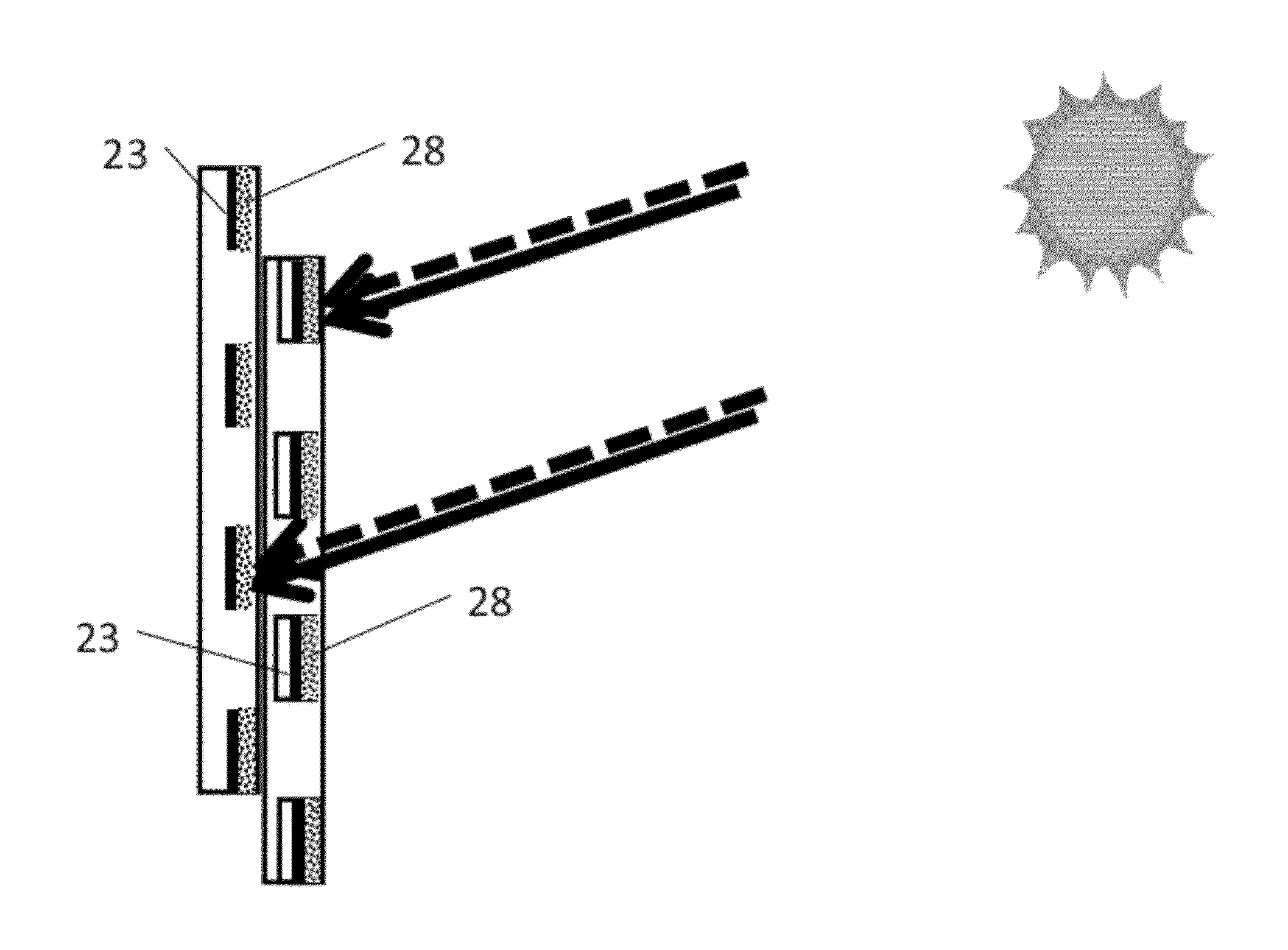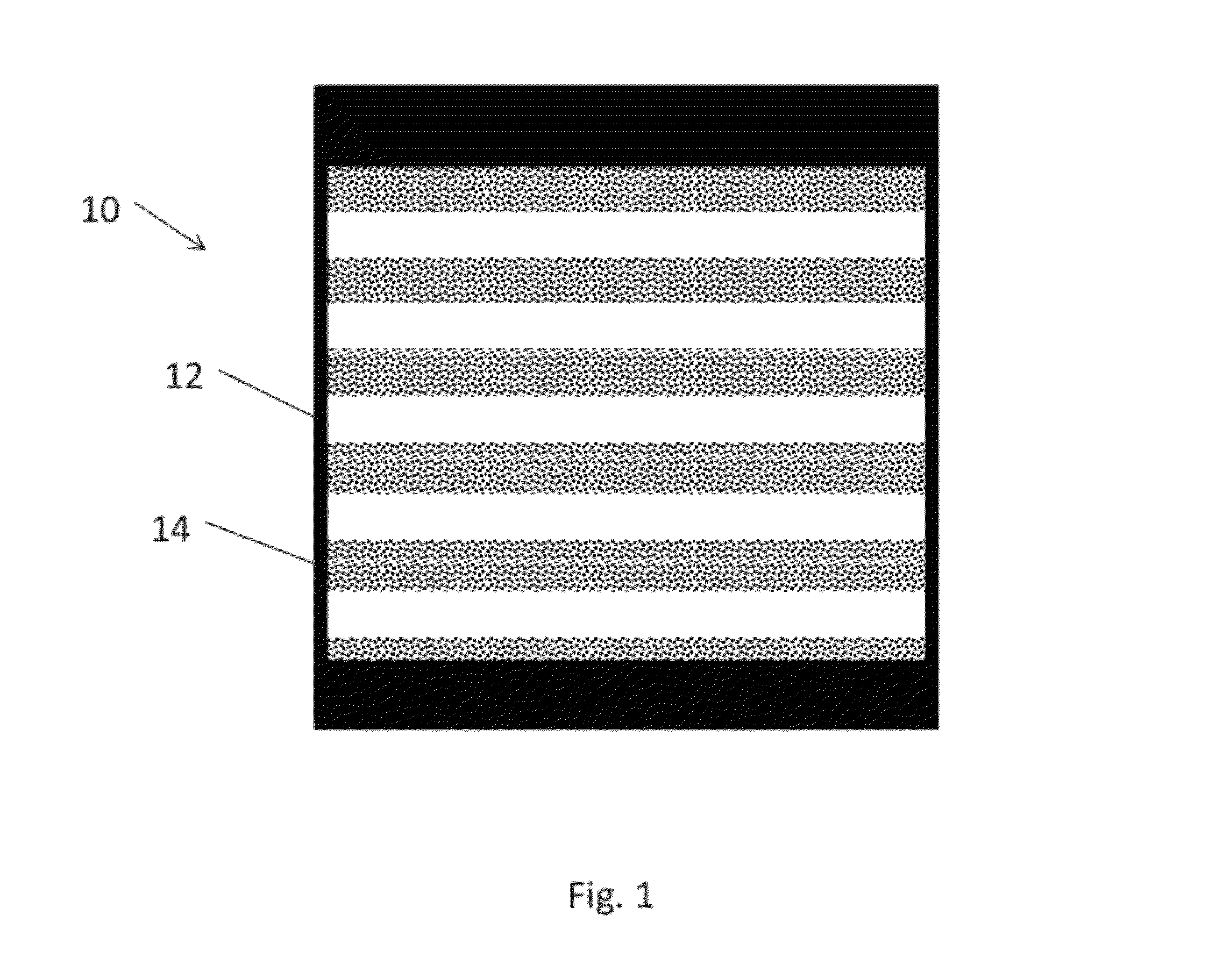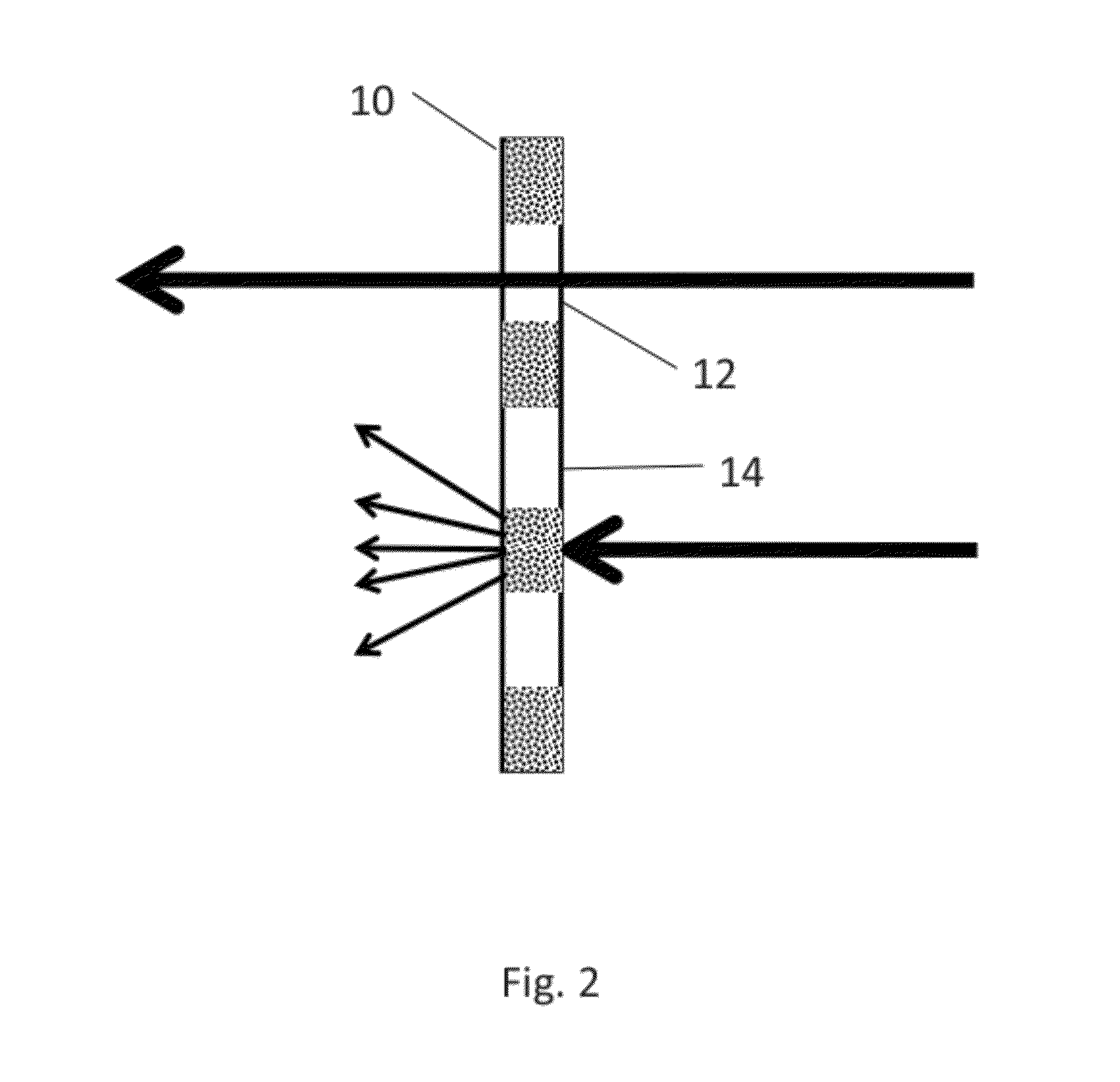Methods and systems for controlling image characteristics of a window
a technology of image characteristics and window, applied in the field of methods and systems for controlling image characteristics of windows, can solve the problems of product price, size limitations, and high production cost of final products, and achieve the effect of reducing incoming image clarity and increasing window translucency
- Summary
- Abstract
- Description
- Claims
- Application Information
AI Technical Summary
Benefits of technology
Problems solved by technology
Method used
Image
Examples
Embodiment Construction
[0050]Systems and methods for controlling light transmission through the glass pane of openings such as window and doors or any other window in buildings or vehicles are disclosed. In accordance with embodiments of the invention, the light transmission is modified by a window that includes a glass pane with two parallel (or substantially parallel) layers or panels (the terms “layer” and “panel” are used herein interchangeably) each having a pattern of transparent areas and nontransparent areas. Transparent is used herein to refer to a region that transmits directly at least part of the visible spectrum (e.g. may include spectrally selectively transmissive materials such as tinted or colored transparent materials). Nontransparent is used herein to refer to a region that is opaque (reflecting or absorbing) to a region of the visible spectrum which the transparent region transmits, or is translucent (matte, textured, or scattering) to a region of the visible spectrum. The layers may be...
PUM
 Login to View More
Login to View More Abstract
Description
Claims
Application Information
 Login to View More
Login to View More - R&D
- Intellectual Property
- Life Sciences
- Materials
- Tech Scout
- Unparalleled Data Quality
- Higher Quality Content
- 60% Fewer Hallucinations
Browse by: Latest US Patents, China's latest patents, Technical Efficacy Thesaurus, Application Domain, Technology Topic, Popular Technical Reports.
© 2025 PatSnap. All rights reserved.Legal|Privacy policy|Modern Slavery Act Transparency Statement|Sitemap|About US| Contact US: help@patsnap.com



